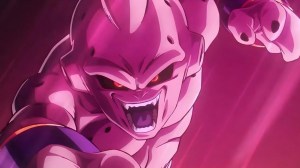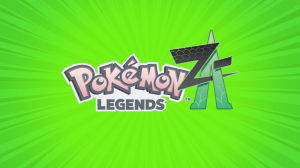Looking back at Steven Spielberg’s cinematic legacy, the filmmaker has depicted the spirit of adventure in ways that would inspire generations of audiences. Whether these adventures included sharks, dinosaurs, or aliens, he tackled the genre in countless fulfilling ways, with one of his crowning achievements being Indiana Jones. While the rogue archaeologist, played by Harrison Ford, might have been driven by “fortune and glory” at times, his quests were often to preserve history for future generations. For Ford’s final outing, James Mangold stepped into the director’s chair with Indiana Jones and the Dial of Destiny, and despite it largely managing to capture that sense of whimsy and excitement Spielberg delivered in four films, it feels like too little (yet also too much), too late.
Videos by ComicBook.com
12 years after the events of Indiana Jones and the Kingdom of the Crystal Skull, Jones (Harrison Ford) is no longer searching for fortune and glory, as he’s found himself in a world that is moving on without him. He finds himself having to retire from giving lectures about ancient artifacts to students more interested in the Space Race, while he sees those efforts being as pointless as going to Nevada. The one person who is still interested in ancient history is Helena Shaw (Phoebe Waller-Bridge), his goddaughter who asks for his help in tracking down a relic created by Archimedes that her father Basil (Toby Jones) was obsessed with. Like other Indiana Jones adventures, our heroes aren’t the only ones trying to track down the object, as “former” Nazi Dr. Jürgen Voller (Mads Mikkelsen) also has his sights set on the relic.
In 1989’s Indiana Jones and the Last Crusade, audiences were given one of the most fulfilling final acts in a trilogy in cinematic history, one that literally saw our heroes riding off into the sunset. While the legacy of Indiana Jones would be felt for years, it’s hard to say that anyone was necessarily clamoring for a new installment, but we were given one regardless in Kingdom of the Crystal Skull. Fans of any property have to ultimately single out a “worst” entry in a series, so Crystal Skull‘s embrace of CGI tomfoolery, its tonal silliness, and the attempts to introduce Shia LaBeouf’s Mutt Williams as being a figure as compelling as other characters in the franchise have often seen it earn criticism from fans. The film’s mere existence complicated the entire franchise’s legacy, and while Dial of Destiny does mark an improvement in a handful of ways, it sadly falls into the same conceptual struggles as its predecessor.
Much like how J.J. Abrams carried on the legacy of George Lucas with the Star Wars franchise, James Mangold does about as good a job as you could expect when following in the immense footsteps of Steven Spielberg. Whether it be lens flares or zooms, Spielberg has a number of signature filmmaking tools he’s been known to use, most of which Mangold manages to avoid utilizing. Instead, he captures, condenses, and reimagines those techniques to evoke the feeling of Spielberg’s excitement and kinetic energy in every scene without directly replicating him. From car chases in Morocco to spelunking through caverns, a lot of scenes feel familiar, though not in a way that feels like an impersonation. The real show-stopping sequence unfolds at a ticker-tape parade, which evokes the energy of Speilberg while also offering environmental textures that feel like they crackle off the screen. Mangold lived up to expectations and, even if he might not have exceeded them, he never drew focus away from the series’ legacy by veering too far off course.
When we meet Indiana Jones in the film’s present day, much of his sarcasm and quips have given way to the more surly components of the character that have always been there. Harrison Ford gets up from a couch shirtless just to yell at his neighbors before pouring booze into his coffee. Both the character and Ford show their age, which is a welcome change from how Crystal Skull aimed to avoid showing any sign of injury for the iconic character. Not only have his physical bouts taken a toll on him, but the emotional trauma and the overall idea of living in a world that no longer needs him are played with nuance and subtlety by Ford, as he doesn’t have to be the smarmy swashbuckler anymore.
Even though Harrison Ford might be offering a much more subdued version of his character, Phoebe Waller-Bridge’s Helena Shaw compensates with all the charm and quips that have left Indiana, and then some. Not only does Helena channel the explorer from the time of Indiana Jones and the Temple of Doom, focusing on the riches she can earn from her spoils, but she also borrows a page from Karen Allen’s Marion Ravenwood in how she pushes back and even bests Jones himself. The nostalgia of seeing Ford donning the legendary fedora is undeniably effective, but it’s truly Waller-Bridge who steals the show in every scene. Some longtime fans might be wary that Helena is merely a creation to carry the torch of the franchise, and while she’ll never be a direct surrogate for Indiana, we welcome as many more adventures with her as we can get. Mads Mikkelsen also lives up to the expectations of a mustache-twirling villain, being a bit more heightened than villains from the original trilogy of films but not being quite as outlandish as Cate Blanchett’s Irina Spalko from Kingdom of the Crystal Skull.
The big setback to Indiana Jones and the Dial of Destiny is that both conceptually and narratively, it never really justifies its existence. With our hero having previously tracked down the Holy Grail, crafting a MacGuffin that ignited a quest requires a fair amount of exposition and backstory for both the characters and audiences. The interplay of time and aging does give the relic some metaphorical significance, but with the abundance of recent blockbusters about second chances, alternate timelines, and multiverses, the underlying impact of the titular object falls flat. We can’t help but wonder if, because Lucasfilm announced in 2015 that Steven Spielberg would direct a fifth film that was set for 2019, the studio put the cart in front of the horse and, when Spielberg pivoted from directing to merely being an executive producer, Lucasfilm felt too committed to the project and didn’t want to bail on it completely, resulting in an adventure whose stakes failed to live up to what came before it.
One definitive improvement over Kingdom of the Crystal Skull is Dial of Destiny‘s embrace of more grounded and realistic set pieces, trading in vine swinging through jungles and collapsing pyramids for subway chases and underwater excursions. In what might be the most ambitious sequence of the film, we see a de-aged Harrison Ford battling against Nazis on a train with Basil Shaw to obtain the Lance of Longinus through battle-worn buildings and a speeding train. The moody lighting mostly disguises the imperfections of the visual trickery, while the scene also establishes the longtime friendship between Indiana and Basil, but it still doesn’t avoid the hollowness of hearing an aged Ford’s voice coming from behind the facsimile of a young face. Opening with a prologue that sets the narrative stage for an adventure is a staple of Indiana Jones films, but a prologue running nearly 30 minutes felt more like a directive to showcase the de-aging technology that would ultimately contribute to the overlong two-hour-and-22-minute run time.
Raiders of the Lost Ark was developed by Steven Spielberg and George Lucas as a tribute to adventure serials, which contributed to that film’s overall pacing. From start to finish, the movie can be broken up into 15-minute chunks that are compelling enough in their own right to not have required audiences to have seen what came before it, or included exposition between charismatic performers that built anticipation for what would come next. Dial of Destiny honors that narrative structure, but between the extended prologue and the various exploits of our characters, we’re given a few too many set pieces and bouts of exposition that make for a fatiguing adventure. Taken on their own, each pursuit, exploration, or puzzle-solving is delightful, though the breadth of these sequences following such a long prologue leaves audiences as worn out as Indiana himself. While some films leave audiences wishing we could have gotten more, Dial of Destiny leaves us wishing we had gotten less.
Harrison Ford and other figures involved with bringing Indiana Jones films to life have expressed that one reason they wanted to tell this story was to give Indiana Jones a more definitive conclusion, and while this might be true of Dial of Destiny, it feels entirely redundant of what we were given in Kingdom of the Crystal Skull. Nothing about this sendoff to the archaeologist felt like it was necessary for the franchise or like it was answering questions the audience was asking, but merely a contractual obligation on the part of Ford and Lucasfilm that was the best we could get from inherent restrictions. For viewers who have spent decades watching Indiana’s exploits, it feels both cathartic and somber to see where life has taken the character, serving somewhat as a metaphor for cinema itself; filmmakers and audiences are both looking more toward the future than celebrating its history. This underlying message feels only more confusing, given the opening sequence that’s entirely reliant upon visual trickery.
We can’t really ever say we’ve grown sick of seeing Harrison Ford as Indiana Jones, so even if his return is received a bit more tepidly, Indiana Jones and the Dial of Destiny feels less like the reunion with an old friend we experienced with Kingdom of the Crystal Skull and more like a farewell party. Even if the events of the film are meant to carry more symbolic significance than narrative merit, it’s still an experience that feels like it has worn out its welcome. Indiana Jones and the Dial of Destiny isn’t necessarily a misstep, but it’s a party no one asked for and one we wished had ended early, though it does give us the gift of Phoebe Waller-Bridge’s Helena Shaw, which we hope becomes the gift that keeps on giving.
Rating: 3 out of 5

Indiana Jones and the Dial of Destiny lands in theaters on June 28th.









